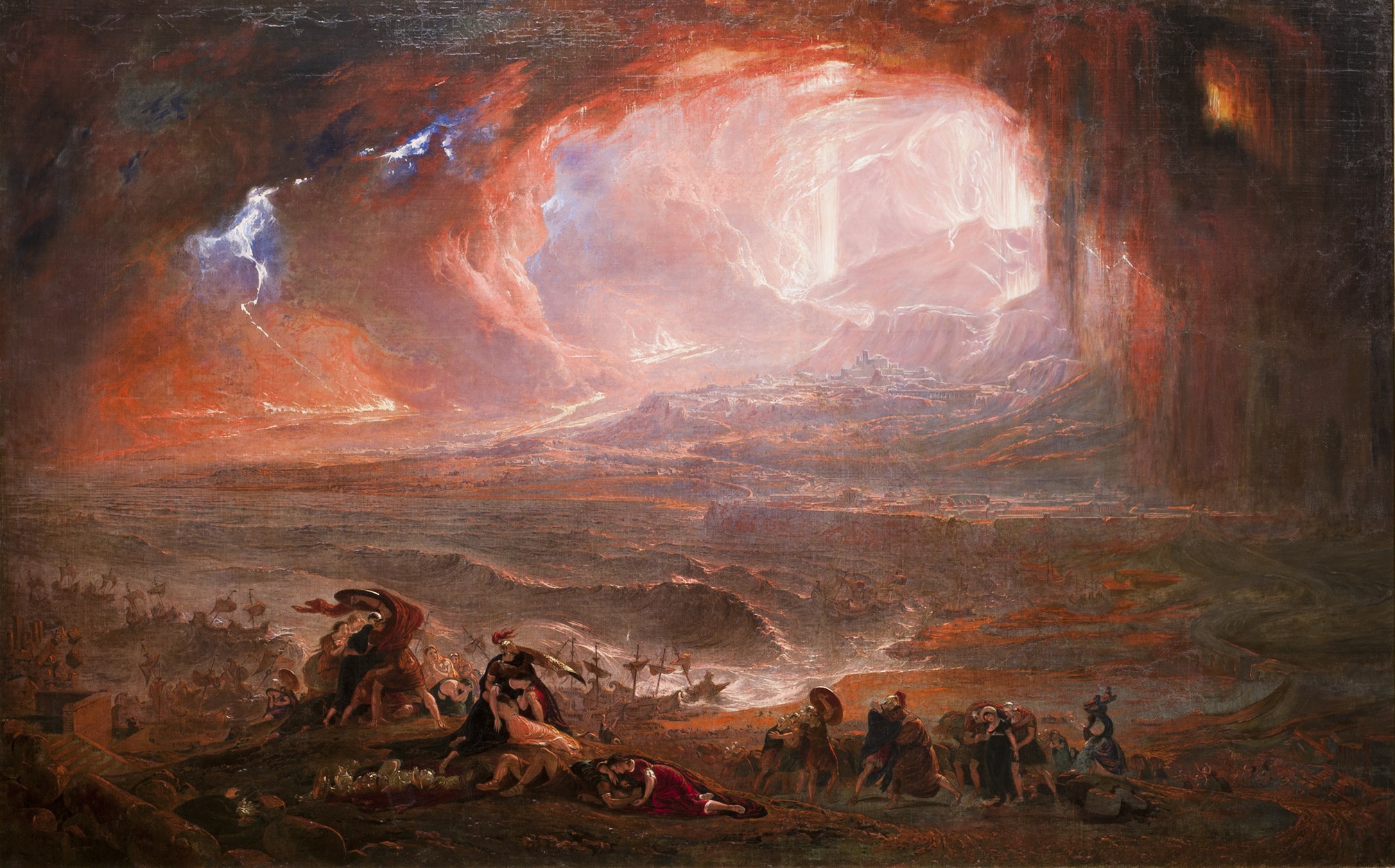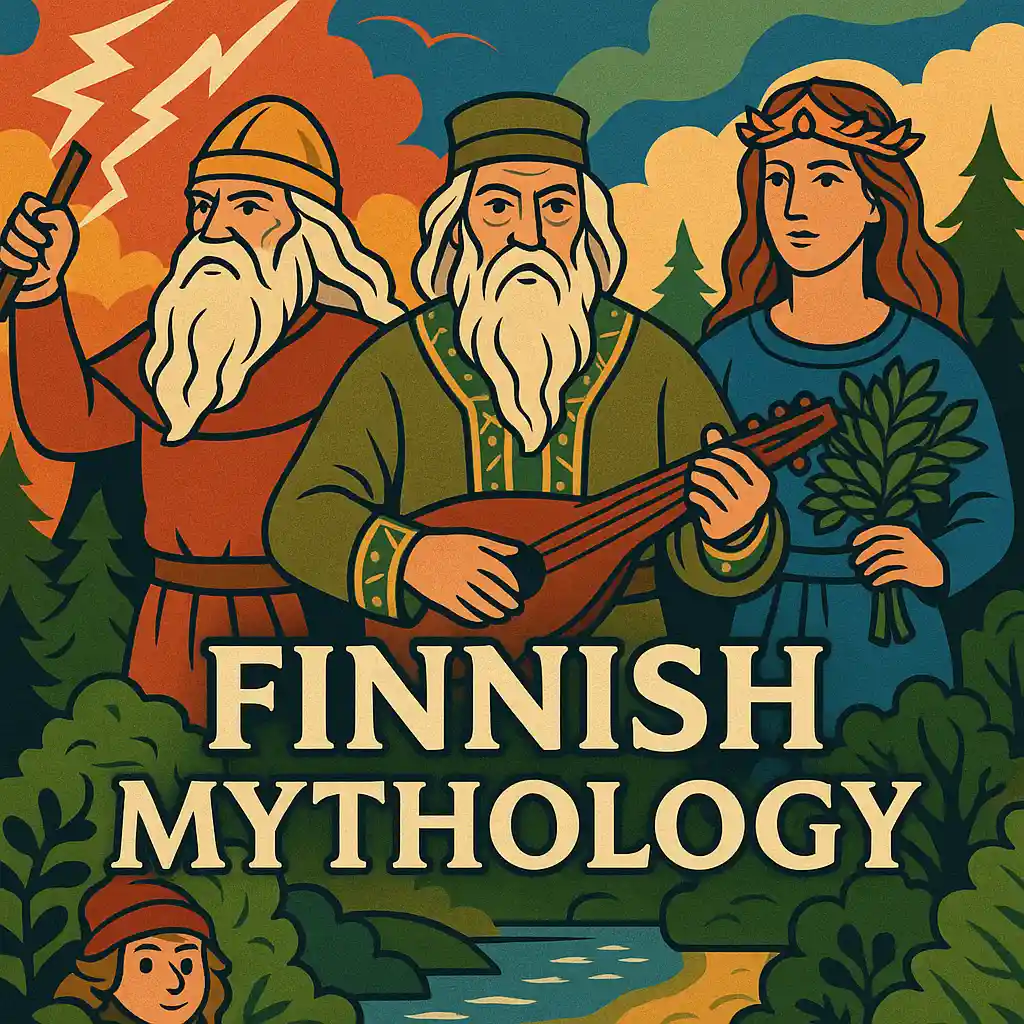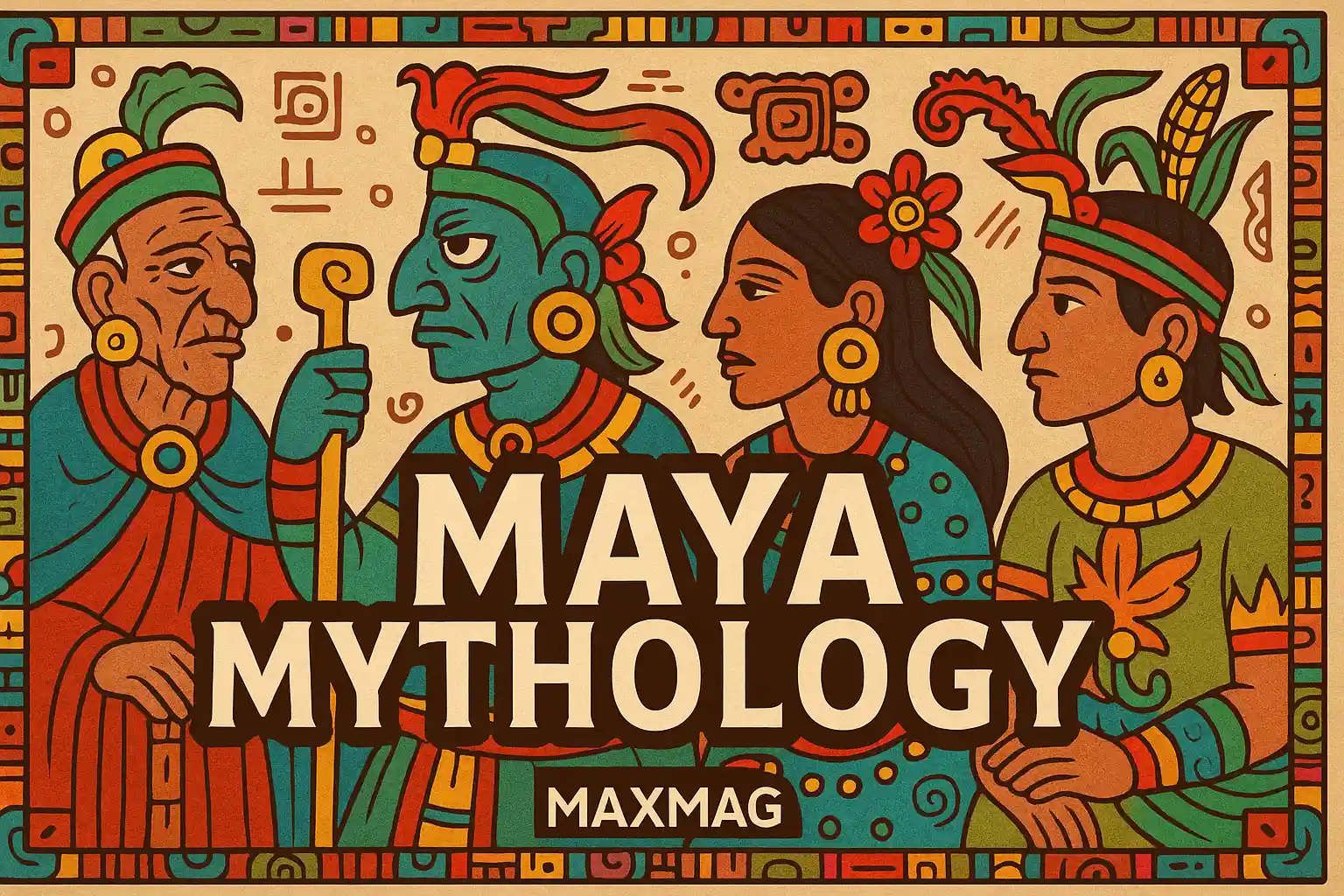Slavic mythology is a powerful and evocative belief system born from the forests, rivers, and mountains of Eastern Europe. Before the arrival of Christianity, Slavic peoples honored a complex pantheon of gods, elemental forces, household spirits, and ancestral deities. Their myths didn’t just explain the world—they infused it with meaning.
Unlike the more centralized traditions of the Greeks or Romans, Slavic mythology evolved regionally, preserved not in stone temples but in village customs, songs, and seasonal rituals. Over centuries, it was nearly erased, pushed underground by Christianization. Yet fragments survived—whispered in folktales, encoded in rural superstitions, and remembered in the rhythms of nature.
Now, in the 21st century, Slavic mythology is being rediscovered. Scholars, artists, and spiritual seekers are piecing together the lost world of Slavic gods and spirits. What emerges is a worldview that reveres nature, honors ancestors, and sees humanity as deeply connected to land, cycle, and soul.
Ancient Origins of Slavic Mythology
The Slavs are one of the largest ethno-linguistic groups in Europe, tracing their ancestry to regions around the Vistula, Dnieper, and Danube rivers. Their early beliefs are difficult to reconstruct precisely due to a lack of written sources. What we know comes from archaeology, Christian chroniclers, and comparative mythology.
Even before they migrated and settled across Central, Eastern, and Southeastern Europe, the early Slavs worshipped forces that governed both natural elements and abstract principles. Trees, rivers, and stones were inhabited by spirits. Thunderstorms were battles among gods. Death was not an end but a transformation, guided by the cycles of the earth.
Some of the earliest mentions of Slavic beliefs appear in 6th- to 10th-century Byzantine texts. These sources often describe the worship of idols, fire rituals, and sacrifices, sometimes misrepresenting them as devilish. Yet through these biased accounts, scholars have recovered clues about the rich pantheon and worldview of the Slavic peoples.
Slavic mythology was shaped by its environment. Dense forests gave rise to woodland spirits. Agricultural cycles inspired fertility rites. Harsh winters and sudden storms imbued natural events with sacred drama. The result is a mythology that is both deeply local and cosmically profound.
The Structure of the Slavic Mythological World
In Slavic cosmology, the universe was divided into three interconnected realms:
-
Yav (Явь): The visible world—the physical plane of humans, animals, and natural phenomena.
-
Nav (Навь): The underworld—a shadowy realm of the dead, ruled by Veles and populated by spirits and ancestors.
-
Prav (Правь): The higher spiritual realm—the divine order that governs all life, where gods reside and universal laws originate.
These realms were linked by the World Tree, or Drevo Zhizni, whose roots, trunk, and branches spanned the entire cosmos. Birds lived in its canopy, serpents coiled at its roots, and the fate of souls moved along its axis.
This tripartite model mirrors Indo-European cosmologies but is uniquely expressed through Slavic agricultural and animist sensibilities. Unlike rigid heavens and hells, Slavic realms were fluid. Spirits could pass between them, especially during liminal times like solstices, eclipses, or dusk.
The Slavic worldview emphasized cycles: life and death, planting and harvest, chaos and order. Humans were not separate from nature—they were participants in a divine rhythm.
The Pantheon: Gods of Slavic Mythology
Perun: Lord of Thunder and Sky
Perun is the supreme god in many Slavic pantheons, especially among Eastern Slavs. A sky god associated with thunder, lightning, war, and justice, Perun rode a chariot across the sky and wielded a mighty axe or hammer. Oak trees were sacred to him, often struck by lightning—a divine signature.
He was seen as the upholder of order and cosmic law, battling chaotic forces represented by Veles. In military rituals, warriors prayed to Perun for strength, victory, and moral righteousness.
Interestingly, Perun’s attributes are strikingly similar to gods like Thor (Norse), Indra (Vedic), and Zeus (Greek), suggesting a shared Indo-European lineage.
Veles: Lord of Earth, Water, and the Dead
Veles is Perun’s cosmic opposite—a god of the underworld, cattle, magic, and commerce. Often depicted as a horned beast, dragon, or serpent, Veles represents wildness, mischief, and transformation. He is the guardian of souls and keeper of wealth beneath the earth.
Their eternal struggle symbolizes seasonal shifts: Veles rising from the underworld to challenge Perun, who responds with thunder, lightning, and rain. This myth plays out in nature—the thawing of spring, the floods of early summer, and the dry order of harvest.
According to the Smithsonian Institution, this mythological conflict also shaped early Slavic legal codes, where oaths were sworn by Perun and Veles together, balancing law and negotiation.
Mokosh: Mother Earth and Fertility
Mokosh is the earth goddess, protector of women, birth, and weaving. Unlike passive fertility goddesses, Mokosh is active—she spins the threads of fate, oversees crops, and blesses families with abundance. Wells and spinning wheels were sacred to her.
She may have been a holdover from pre-Indo-European earth worship, later adapted into Slavic cosmology. Even after conversion to Christianity, Mokosh lived on as the Virgin Mary or Saint Paraskeva in Eastern European folk tradition.
Many Slavic homes kept small shrines or icons representing Mokosh, asking her for safe childbirth or good harvests.
Svarog and the Celestial Family
Svarog is the divine blacksmith and god of fire, crafting the sun, moon, and sky. His sons include:
-
Dazhbog, the sun god and giver of wealth. He rides a fiery chariot and lights the world.
-
Stribog, the wind god who scatters the air and brings weather across the steppes.
-
Simargl, a mythical creature sometimes viewed as a guardian of seeds and time.
This celestial triad represents the forging, moving, and illuminating forces of the heavens. Some myths suggest Svarog gifted humans with fire and crafts—echoing the Prometheus story.
Spirits, Creatures, and Demigods
Domovoi: Guardian of the Home
Domovoi are small, bearded household spirits who protect the family, livestock, and hearth. A happy Domovoi ensures prosperity; an angry one brings illness and misfortune. Families left offerings like bread, milk, or tobacco to appease him.
Domovoi are deeply rooted in Slavic domestic life. Their presence reinforces the idea that every space is shared with spirit and must be treated respectfully.
Leshy: Master of the Forest
The Leshy is the forest spirit, a tall man with mossy hair, glowing eyes, and the power to shapeshift. He can lead travelers astray or grant them knowledge—depending on their attitude.
To enter a forest without saluting the Leshy was dangerous. Hunters and herbalists often left coins, herbs, or bread at the edge of the woods in exchange for safe passage.
According to researchers at the University of California, Berkeley, belief in such beings reflects a deep animist logic—where every forest, field, or river has its guardian.
Rusalka: Spirit of Water
Rusalki are female water spirits—often beautiful, but dangerous. They lure people into lakes and rivers, especially men. Some stories portray them as tragic souls of drowned women, while others emphasize their seductive and vengeful nature.
Despite their menace, Rusalki were once honored during Rusalka Week, when young girls would dance and sing by rivers to appease them. The duality—beauty and danger—is a hallmark of Slavic spiritual storytelling.
Seasonal Rituals and Festivities
Slavic mythology is inseparable from the calendar. The natural cycle of the year shaped every aspect of life—from sowing and reaping to marriage and mourning.
Kupala Night: Fire, Water, and Fertility
Kupala Night is the Slavic midsummer festival, held near the summer solstice. It celebrates the union of fire and water, masculine and feminine, life and passion. People jump over bonfires, search for the mythical fern flower, and float wreaths in rivers to divine love and fate.
Couples would leap together to test compatibility. Girls would release flower crowns into the water and track where they floated. If a boy retrieved your wreath—it meant romance or marriage was near.
This ritual is still practiced in parts of Ukraine, Poland, and Belarus, often blended with Christian observances of St. John the Baptist.
Dziady: The Feast of the Ancestors
Dziady is an ancestral rite observed during spring and autumn, when the veil between worlds thins. Families lit candles on graves, prepared meals for the dead, and invited their ancestors into the home.
Chants and invocations asked for blessings and guidance. Misfortune was often seen as a result of neglecting one’s ancestors.
This feast affirms a central tenet of Slavic mythology: that the dead remain part of the family, watching and influencing events from the other side.
Suppression, Survival, and Revival
When Christianity spread through Slavic lands from the 9th to 12th centuries, many pagan practices were banned. Idols were burned, temples were destroyed, and gods were replaced by saints. Yet the myths survived—not in churches, but in kitchens, fields, and forests.
Folk tales became the new scriptures. Old deities took on new masks. Perun became Saint Elijah, who still rides a flaming chariot through the sky. Mokosh was reborn as the Virgin Mary, and Leshy stories were told as children’s cautionary tales.
In modern times, these traditions have re-emerged through literature, fantasy media, and religious movements. Groups like Rodnovery aim to revive pre-Christian Slavic spirituality with reconstructed rituals, festivals, and prayers.
At academic levels, institutions such as the American Folklife Center and University of Colorado Boulder study Slavic oral traditions, chants, and myth structures, highlighting how this rich mythology evolved despite erasure.
Slavic Mythology and Global Connections
Slavic mythology, though regionally unique, shares common themes with other ancient belief systems: dualistic gods (like in Zoroastrianism), solar chariots (seen in Vedic myth), and ancestor veneration (paralleled in Chinese traditions).
Myths of fire-bringers, divine twins, trickster spirits, and earth goddesses appear globally, yet the Slavic versions reflect the distinctive landscape and history of Eastern Europe.
This makes Slavic mythology both part of a global conversation and deeply local. Its stories are tied to pine forests, icy rivers, bread ovens, and ancestral songs.
To better understand the connections between gods, kinship, and cosmic order, see The Greek Mythology Family Tree at Polynesian Mythology Legends, which maps divine genealogies in a comparative framework.







